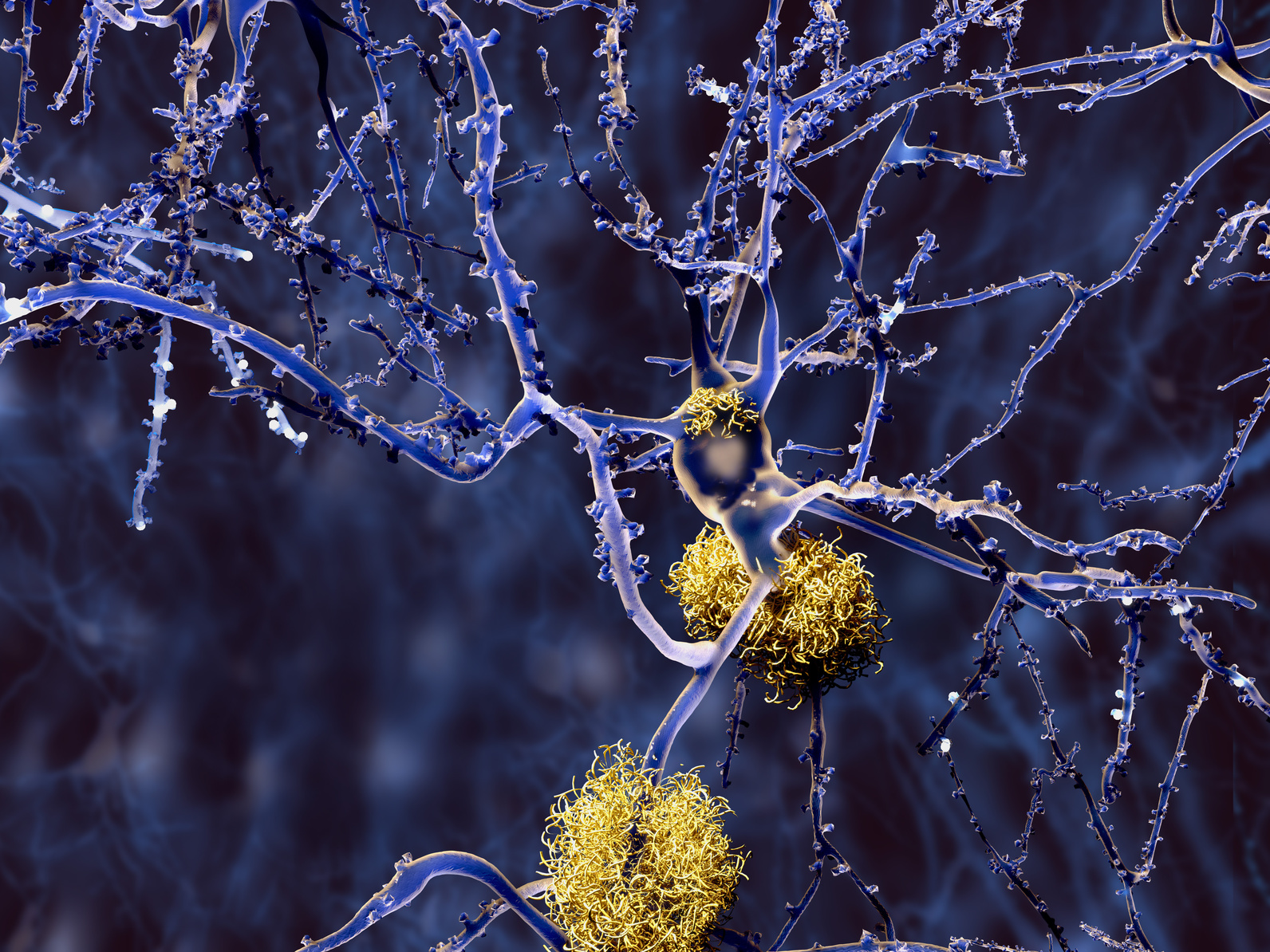Amyloid plaques in Alzheimer's and diabetes: Novel leads for inhibitors
Promising results with inhibitors of amyloid formation

The scientists designed and studied 16 different peptide molecules in order to find out which of them are able to impede the “clumping” of the proteins amyloid beta (Aß) and islet amyloid polypeptide (IAPP), which are associated with Alzheimer's and type 2 diabetes.
The molecules were designed on the basis of scientific work that shows that the Aβ and IAPP proteins interact with each other, and that this “cross-amyloid interaction” suppresses their clumping. The researchers selected short sequences of the IAPP protein that correspond to the key regions involved in the interaction with the Alzheimer's protein. These "hot segments" were then chemically linked to each other by using specific peptide segments as “linkers” in order to mimic and optimize the IAPP cross-amyloid interaction surface.
Powerful inhibitors block pathologically relevant amyloid proteins in Alzheimer's and diabetes
The work performed by Professor Kapurniotu's Peptide Biochemistry team at the TUM School of Life Sciences Weihenstephan together with researchers led by Professor Bernd Reif, TUM Department of Chemistry, and Professor Gerhard Rammes at Department of Anesthesiology, TUM Klinikum Rechts der Isar, identified among the designed molecules a number of powerful inhibitors of protein clumping. Three of the new peptide molecules suppressed cytotoxic clumping of both the Alzheimer's Aβ and the type 2 diabetes IAPP. Another four designed peptides displayed selective inhibition of self-association of Aβ whereas one showed selective inhibition of IAPP clumping.
The results reveal a novel class of peptide leads that block misfolding and clumping of pathologically relevant amyloid proteins in Alzheimer's disease and type 2 diabetes, which could, in principle, be suitable for the development of therapeutics. In addition, the developed inhibitor design concept might find application in designing molecules that suppress disease-related interactions of other proteins as well.
The results of these research studies were just published in the journal 'Angewandte Chemie'. Additional studies are now underway to evaluate the potential medicinal applicability of these “test tube” results and investigate the possibility of applying the inhibitor design concept to other proteins as well.
Publication:
Erika Andreetto, Eleni Malideli, Li-Mei Yan, Michael Kracklauer, Karine Farbiarz,Marianna Tatarek-Nossol, Gerhard Rammes, Elke Prade, Tatjana Neumüller, Andrea Caporale, Anna Spanopoulou, Maria Bakou, Bernd Reif, and Aphrodite Kapurniotu: A Hot-Segment-Based Approach for the Design of Cross-Amyloid Interaction Surface Mimics as Inhibitors of Amyloid Self-Assembly, Angewandte Chemie 2015 Sep..
DOI: 10.1002/anie.201504973
Contact:
Prof. Dr. Aphrodite Kapurniotu
Technical University of Munich
Division of Peptide Biochemistry
Tel: 0049-8161-713542
E-mail: akapurniotu@wzw.tum.de